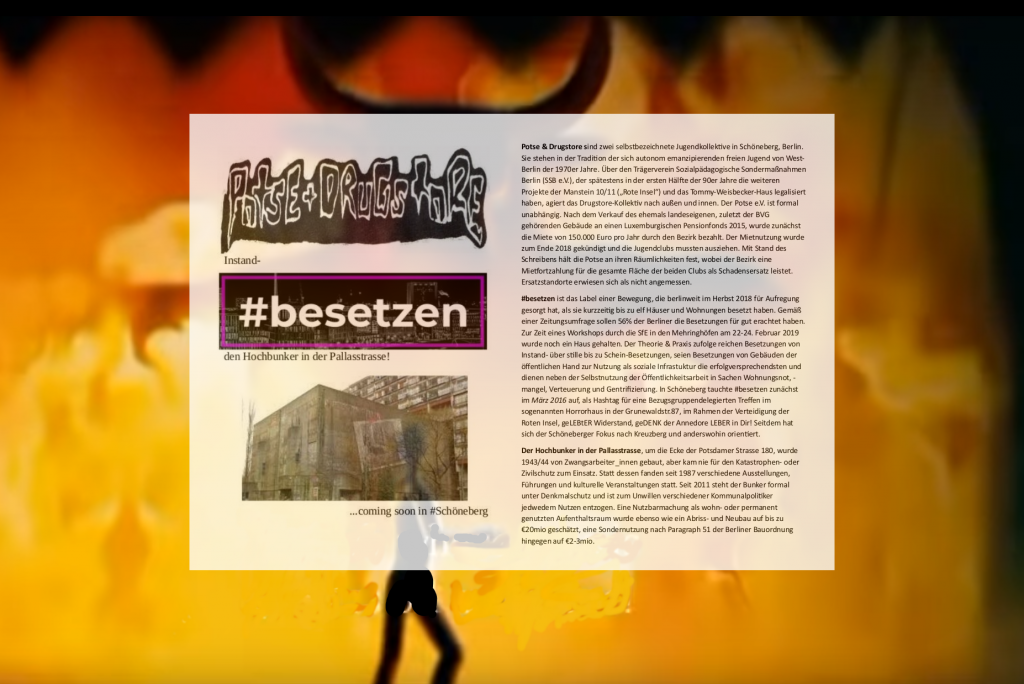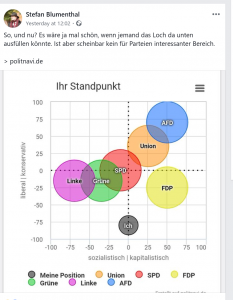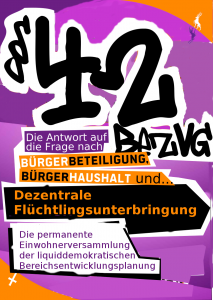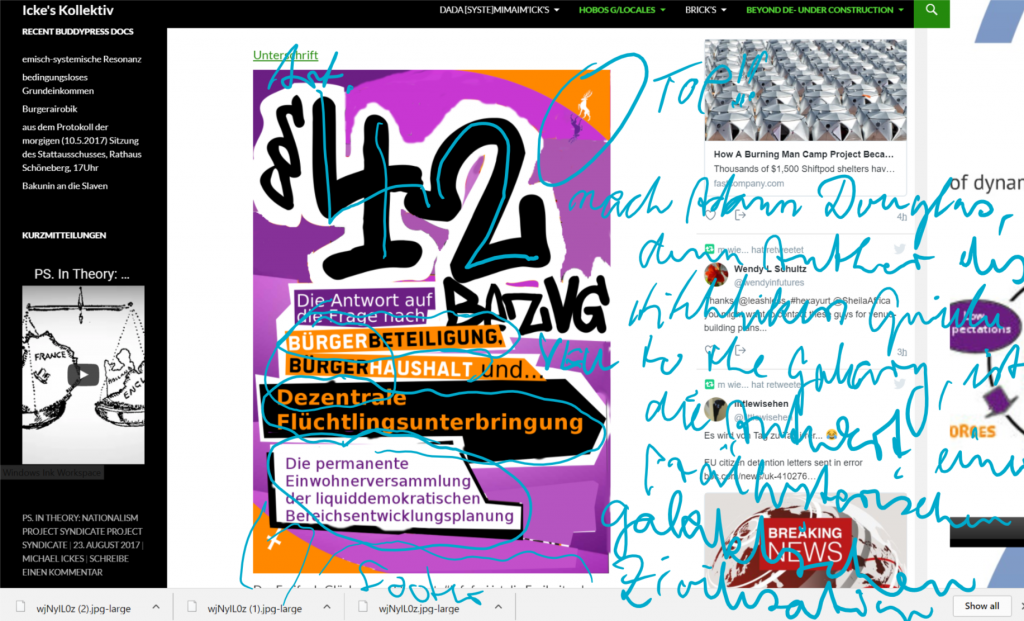
das …ohne Bezug: https://mimaimix.de/icke/docs/pots-blitz/ 3.Rohfassung (work in progress):

Na ja, ist richtig. Die Frage ist wie so oft eben einerseits nach dem Koordinatensystem und zum anderen nach der Beurteilung. Das Koordinatensystem soll ein Spektrum dar, 1. von sozialistisch bis kapitalistisch 2. von liberal nach konservativ. Beides sind eigentlich keine Spektren. Spektren sind dann, und nur dann gegeben, wenn den Erscheinungen eine Frequenz zugeordnet…

This gallery contains 9 photos →

Zweiundvierzig ist die Hausnummer für die Bebauung der Ponte Rosa. Nach Paragraph 42 des Bezirksverwaltungsgesetzes haben Ein- und Anwohner eine Einwohnerversammlung beantragt: http://www.berlin.de/ba-tempelhof-schoeneberg/aktuelles/pressemitteilungen/2017/pressemitteilung.623682.php Bezirk Tempelhof-Schöneberg verschweigt beschlossene Einwohnerversammlung zur Bebauung im Flaschenhals/Ponte Rosa http://www.berliner-woche.de/schoeneberg/bauen/biergarten-soll-weg-einwohnerversammlung-zu-ponte-rosa-geplant-d131102.html Follow @TwitterDev

This gallery contains 2 photos →

Whilst Oxford reprints 3D, Germans train Syrian craftspeople <iframe width=”560″ height=”315″ src=”https://www.youtube.com/embed/8wo5OuQrDtc” frameborder=”0″ allowfullscreen></iframe> DadaSysteMi… Dada, the Arts: Aktionskunst (virtuell), Lebenskunst, Kultur (politische), SysteM, Mix MiMaiMix ist der erste Avatar, ein persönlicher Visir. Das impliziert, dass Gottes Manifestation ein Sultan (Kalif?) ist? privat, Sozial, gesellschaft, wirtschaft, wissenschaft & geld Sockenpuppenmanagement BrIck´s: 42, ViKtorI! #infofrei hobos…
Werde darauf erwidern… copy paste from https://barbaramckenzie.wordpress.com/2016/12/23/the-civil-march-on-aleppo-has-the-foreign-offices-prints-all-over-it/ The Civil March on Aleppo has the Foreign Office’s Prints All Over It This article follows on from The British Foreign Office and the Propaganda War on Syria The role played by the British Foreign Office and other government departments in the unremitting propaganda against the Syrian government is…
Lompscher geht es um Grundsätzliches: „Wir haben vereinbart, bei umstrittenen Bauvorhaben die Planungen gemeinsam mit den Bürgern und den öffentlichen Wohnungsbaugesellschaften zu überdenken, um die Akzeptanz in der Bevölkerung zu erhöhen.“ §42BezVG Art42VEU §42ECBelarus 42… die Antwort auf die Frage nach Bürgerbeteiligung Bürgerhaushalt … und dem ganzen Rest … der dezentralen Flüchtlingsunterbringung … der liquiddemokratischen…